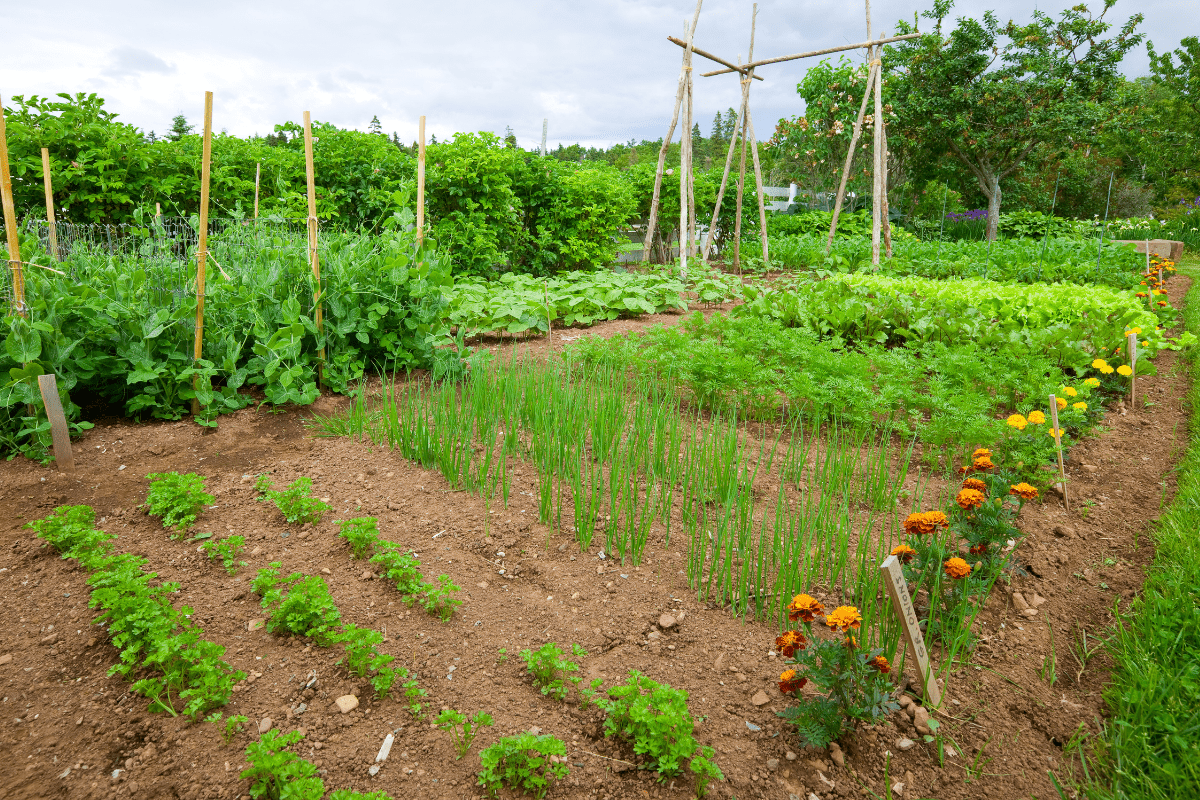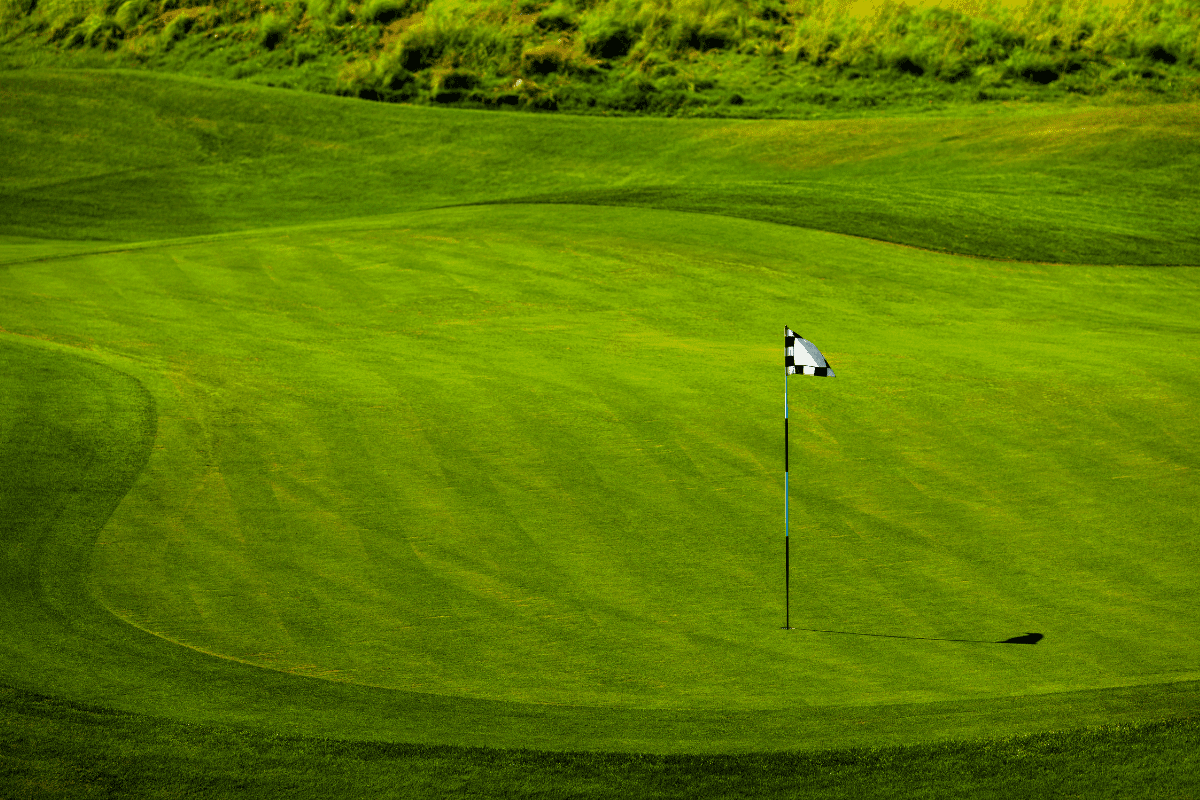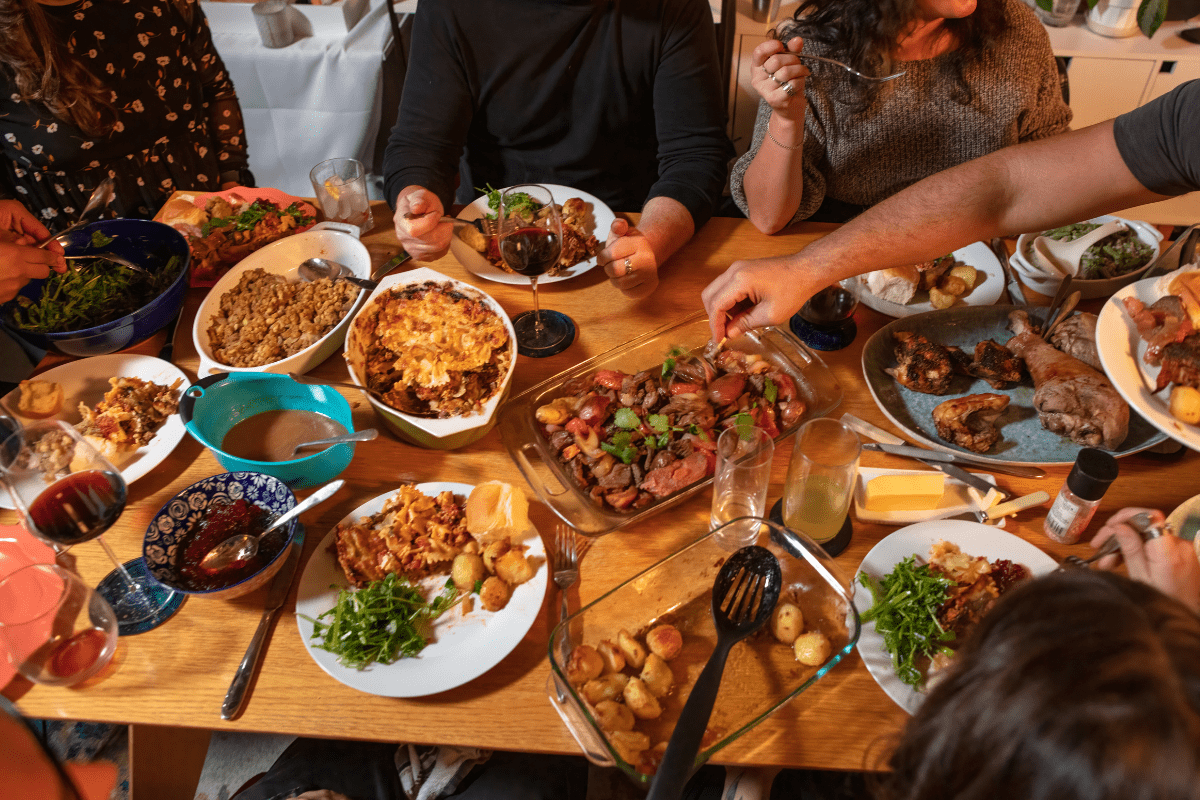Nebraska gardeners face a unique challenge that would make even the most seasoned green thumbs pause… our weather basically has multiple personality disorder. One day it's 75 degrees in February, the next week we're scraping ice off our windshields in May. But here's the thing: once you learn to work with Nebraska's moody climate instead of fighting it, you can grow an incredible variety of flowers, fruits, and vegetables that'll make your neighbors wonder if you've made a deal with the garden gnomes.
Understanding Nebraska's growing zones and climate quirks
Before we dive into what to plant when, let's talk about why Nebraska gardening feels like playing agricultural roulette sometimes. The state spans USDA hardiness zones from 4a in the northwestern panhandle (where winter laughs at your dreams) to 6a in the southeastern counties (where you might actually see spring before June).
Our average growing season runs about 164 days, which sounds decent until you realize that number includes those sketchy shoulder weeks where frost plays peek-a-boo with your tomatoes. The good news? That growing season has been steadily lengthening over recent decades, giving us more time to experiment and occasionally fail spectacularly.
Here's what makes Nebraska special: we get wild temperature swings, unpredictable precipitation (ranging from 34 inches annually in the east to a measly 17 inches out west), and wind that'll make your corn stalks do the limbo. But we also have some of the richest agricultural heritage in the nation, with over 44,000 farms covering 89% of our state. If they can do it, so can we… just on a much smaller scale with significantly more swearing involved.
Spring gardening in Nebraska: Dancing with frost dates
Spring in Nebraska arrives like a teenager learning to drive stick shift… lots of false starts, grinding gears, and sudden stops. But once you understand the rhythm, you can get your garden off to a fantastic start.
Timing is everything (and everything is unpredictable)
The magic dates every Nebraska gardener should tattoo on their forearm: last frost ranges from May 3 in southeastern counties to May 25 in the panhandle. Of course, Mother Nature treats these dates more like suggestions than rules. I've seen snow in May and 80-degree days in March, because apparently, Nebraska weather operates on chaos theory.
The secret isn't waiting for perfect conditions… it's knowing which plants can handle Nebraska's mood swings. Cool-season crops actually prefer our bipolar spring weather, germinating happily when soil temperatures hit 40-50°F, while those prima donna warm-season plants demand at least 55-60°F.
Early spring heroes: The tough guys of the garden
Starting around March 15 (or whenever you can work the soil without creating mud bricks), you can plant the vegetables that laugh at frost:
- Asparagus crowns
- Onions (sets or transplants)
- Peas (snow, snap, and shelling)
- Radishes
- Spinach
- Turnips
These aren't just frost-tolerant; they actually taste better when grown in cool weather. That spinach you planted in March will be tender and sweet, unlike its bitter summer cousin that bolts faster than a spooked rabbit.
For early flowers, pansies are basically the Chuck Norris of the flower world… they'll bloom through snow and smile about it. Snapdragons and native pasque flowers also join the early party, giving you color while your neighbors' gardens still look like abandoned lots.
Mid-spring expansion: Adding to the party
By mid-April, when the soil has warmed a bit more and you're feeling cocky about dodging frost, it's time to add:
- Broccoli, cabbage, and cauliflower transplants
- Direct-seeded carrots and beets
- Lettuce (endless varieties to try)
- Swiss chard
- Potatoes
Here's a pro tip from someone who learned the hard way: those plastic milk jugs you've been recycling? Cut the bottoms off and use them as mini greenhouses over tender transplants. They're like individual panic rooms for your plants when unexpected frost threatens.
Speaking of frost protection, floating row covers provide 2-8°F of protection depending on thickness, while cold frames basically create a microclimate that's 10-20°F warmer. Sarah Browning from Lancaster County Extension recommends starting warm-season crops indoors 6-12 weeks before that last frost date. Your tomatoes and peppers will thank you with earlier harvests.
Summer heat: When Nebraska gardens get serious
If spring is Nebraska's awkward teenage phase, summer is when we go full adult mode… intense, demanding, and occasionally overwhelming. Temperatures regularly soar above 95°F, and rainfall becomes as reliable as a politician's promise.
Choosing heat lovers and drought survivors
Once we're past Memorial Day and relatively confident Jack Frost has gone on vacation, it's time for the summer stars:
Vegetables that thrive in heat:
- Tomatoes (try Jetstar or Mountain Fresh)
- Peppers (all types)
- Sweet corn
- Beans (bush and pole)
- Summer squash and zucchini
- Cucumbers
The Extension variety trials have identified specific varieties that handle our extreme temperature swings better. Mountain Fresh tomatoes, for instance, resist the cracking that happens when we get a sudden downpour after two weeks of drought.
Want continuous harvests? Practice succession planting by sowing beans and corn every two weeks through early July. It's like having multiple small gardens maturing at different times, which means fresh produce all summer long instead of the dreaded zucchini avalanche where you're leaving bags on neighbors' doorsteps under cover of darkness.
Water wisdom: The art of not killing everything
Nebraska summers test your commitment to gardening. The eastern part of the state might see 34 inches of rain annually, but out west? They're lucky to get 17 inches, and most of that seems to come in one Tuesday afternoon thunderstorm that flattens everything.
Vegetables need about 1-1.5 inches weekly, and no, standing there with the hose for five minutes doesn't count. Drip irrigation or soaker hoses deliver water right to the roots without wasting it on evaporation or encouraging fungal diseases.
The drought prioritization list every Nebraska gardener learns eventually:
- Trees (expensive to replace)
- Shrubs (also pricey)
- Vegetables (your actual food)
- Lawn (basically optional)
During the 2012 drought when we got just 13.4 inches of rain statewide, the gardeners who mulched heavily with 2-3 inches of organic material were the ones still harvesting tomatoes while the rest of us watched our gardens turn into crispy disappointments.
Summer flowers that won't quit
For flowers that can handle Nebraska's summer torture test, think tough:
- Marigolds (practically indestructible)
- Zinnias (drought-tolerant and gorgeous)
- Native coneflowers (echinacea)
- Black-eyed Susans
- Ornamental grasses
These aren't just survivors; they're the flowers that'll still look good in August when everything else has given up. Plus, they support pollinators, which means better yields in your vegetable garden. It's like hiring tiny unpaid workers who work for nectar.
Fall gardening: The second spring (but better)
Here's what nobody tells you about fall gardening in Nebraska: it's actually easier than spring gardening. No more guessing about frost dates, the soil is already warm, and many vegetables taste better after a light frost converts their starches to sugars. It's like nature's way of apologizing for summer.
Timing your fall garden backwards
First frost typically arrives between September 24 up north and October 3 in southern counties. To figure out when to plant, count backwards from these dates using the days-to-maturity on your seed packets. It's garden math, but the simple kind that doesn't require calculus.
July is your critical fall planting window, which feels weird when it's 98°F and you're sweating just thinking about gardening. But trust the process:
July plantings for fall harvest:
- Brussels sprouts transplants (10-12 weeks to mature)
- Broccoli and cabbage transplants
- Direct seed carrots, beets, turnips (70-80 days)
Early August additions:
- Kale and collards
- Spinach and lettuce
- Asian greens like bok choy
The UNL Extension research shows these cool-season crops can survive temperatures down to 20°F with proper mulching. That's right… your kale is tougher than you are.
Storage crops: Nature's root cellar
Fall is when Nebraska gardeners channel their inner pioneer with storage crops. Winter squash and pumpkins planted in late May come ready just before frost. Sweet potatoes need special treatment: cure them at 80-85°F for 10 days (a warm garage works), then store at 55-60°F for months of sweet potato everything.
Commercial potato farms in Nebraska average 470 hundredweight per acre, but home gardeners often beat those yields because we can baby our plants in ways commercial operations can't. Hill your potatoes multiple times, keep them consistently watered, and you'll be eating homegrown spuds until spring.
Here's a trick that'll make you feel like a gardening genius: leave carrots and parsnips in the ground under a thick layer of mulch. You can harvest them all winter long, and they'll be sweeter than any store-bought version. Just mark the rows with tall stakes so you can find them under snow. Nothing says "I've got my life together" like harvesting fresh carrots in January.
Winter growing: Yes, it's actually possible
Most Nebraska gardeners think winter means the garden goes into hibernation. But with some simple structures and smart variety choices, you can be harvesting fresh greens while everyone else is eating sad grocery store lettuce.
Season extension without breaking the bank
John Porter, Nebraska's Season Extension Specialist, has proven you can build effective cold frames and low tunnels for under $200. These simple structures maintain temperatures 5-10°F warmer than outside, which doesn't sound like much until you realize that's the difference between dead plants and fresh salads.
The trick is getting plants established before the "Persephone period" when daylight drops below 10 hours daily. Growth essentially stops during these short days, but established plants maintain quality for weeks, just chilling (literally) until you harvest them.
Winter-hardy vegetables that actually work:
- Spinach (laughs at cold)
- Kale (gets sweeter with frost)
- Mâche (corn salad)
- Claytonia (miner's lettuce)
- Asian greens
- Certain lettuce varieties
Planning next year while this year sleeps
February might seem early to start thinking about summer tomatoes, but that's exactly when you should be starting seeds indoors. The timeline that actually works:
- Tomatoes and peppers: Start 10-12 weeks before transplant
- Cole crops (broccoli, cabbage): 6-8 weeks
- Annual flowers: 8-10 weeks
- Herbs: 6-8 weeks
This is also prime time for forcing rhubarb crowns in your basement (yes, that's a real thing) and growing microgreens on your windowsill. The Nebraska Master Gardener program offers workshops throughout winter, which beats binge-watching another series while dreaming of spring.
Expert tips and local wisdom
After decades of research, the University of Nebraska-Lincoln Extension has figured out what actually works in our challenging climate. Their variety trials consistently identify winners like Buttercrunch lettuce for spring, Mountain Fresh tomatoes for summer, and Ruby Queen beets for fall storage.
Soil health: The unsexy secret to garden success
Local farmers will tell you the secret to everything is soil organic matter… aim for 3-5% content. That means adding compost every year, even when you don't feel like it. Think of it as a savings account for your garden; you might not see immediate results, but compound interest in soil health pays off big time.
Crop rotation isn't just for big farms. Rotating by plant families prevents disease buildup and nutrient depletion. The simplified version: don't plant tomatoes in the same spot every year unless you enjoy watching them die dramatically from various wilts and blights.
Natural pest management that actually works
The Extension's PAMS model (Prevention, Avoidance, Monitoring, Suppression) sounds corporate, but it's really just common sense:
- Prevent problems with healthy soil
- Avoid issues by choosing resistant varieties
- Monitor regularly (daily garden walks)
- Suppress problems starting with least toxic methods
Companion planting isn't just garden folklore. Radishes planted around squash really do help deter squash bugs, and marigolds actually suppress nematodes. No, they're not magic, but they're close enough.
The numbers that'll convince your spouse
Let's talk money, because "it'll save us money" works better than "I just really like playing in dirt" when justifying garden expansion. Home gardens in Nebraska show an average 757% return on investment. Put in $70, get back $600 worth of produce.
The climate is changing in ways that affect our gardens. Nebraska has warmed 1.6°F since 1895, and we're projected to see 20-25% more growing degree days by mid-century. That means longer seasons but also more extreme heat days above 95°F. Time to start trialing those heat-tolerant varieties now.
Bringing it all together
Nebraska gardening isn't for the faint of heart. We deal with temperature swings that would make other gardeners weep, precipitation that arrives all at once or not at all, and wind that tests every stake and trellis we build. But we also have some of the best soil in the world, a growing community of gardeners sharing knowledge, and the satisfaction of producing food in a place where nature doesn't make it easy.
Start small, expect some failures (they make the best stories), and remember that every Nebraska gardener has killed plants in spectacular ways. The difference between a beginner and an expert is that experts have failed more times and learned from each disaster.
Whether you're growing a few tomatoes in containers or converting your entire yard into an edible landscape, the key is working with Nebraska's seasons rather than against them. Plant cool-season crops when it's cool, heat lovers when it's hot, and always keep some row cover handy for those surprise May snowstorms. Because in Nebraska, the only predictable thing about gardening is that it'll keep you humble, occasionally frustrated, but ultimately rewarded with the best-tasting produce you've ever eaten.





